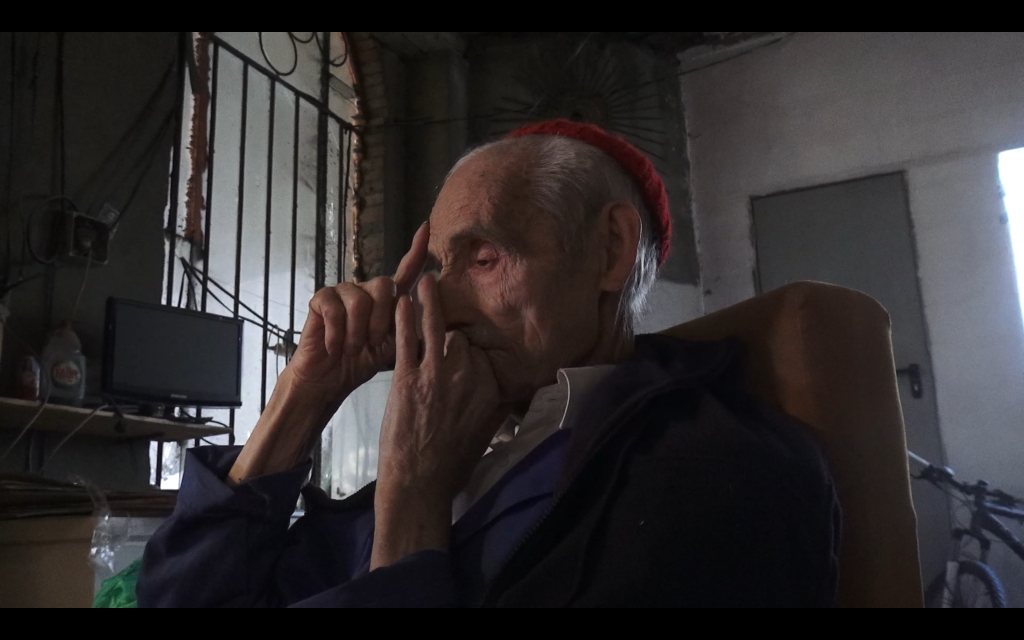
En 1961, tras ser expulsado del monasterio donde había ingresado siete años antes, Justo Gallego se compra un librito de catedrales y castillos y se prepara para allanar un terreno propio de cinco mil metros cuadrados, decidido a construir una Catedral en honor a la Virgen del Pilar. Acoplando el ascetismo y la rectitud moral del monje a la imaginación del arquitecto y la maña del albañil, Justo, a sus 93 años, recorre un camino espiritual poco convencional. La fe inquebrantable y poco más que un trozo de pan seco al día es lo único que ha necesitado este cuerpo, ahora casi cadáver, para levantar entre escombros veinticinco cúpulas y ocho torres a cuarenta metros sobre el suelo. De una magnitud que quita el aliento, la Catedral de Justo ha sido erguida mayormente con materiales donados o reciclados: alambres, plásticos, montañas de mármol partido, sacos de cemento y ladrillos defectuosos.
A su lado, Ángel, ex artillero, amante de la caza, el riesgo y el tabaco, lleva más de veinte años ayudándole. Convive con Justo en la Catedral, construyendo, alimentándole y atendiéndole en las necesidades de su vejez. Figura que oscila entre pecador en busca de redención y cristiano devoto, Ángel es el heredero asignado por Justo para terminar la obra. El documental retrata el día a día en este peculiar espacio del extrarradio de la capital, que tintado de surrealismo, va adentrándose en la psique de los dos personajes ambivalentes que conforman el extraño microcosmos en equilibrio de la “Catedral de la Fe”.

Aquí podéis encontrar más información de este documental dirigido por Cadhla Kennedy y Román Cadafalch. Además, podéis oír y ver la entrevista que les hicieron en HABLANDO DE CINE. Especial Visions Du Reel – DéjateTV
Para aquellas personas que podáis leer inglés, os paso el enlace de un artículo muy interesante sobre el mismo documental, Pan Seco, que acaba de salir publicado en Dublin Review of Books bajo el título Compelling the Heart to Care, escrito por Dick Edelstein.
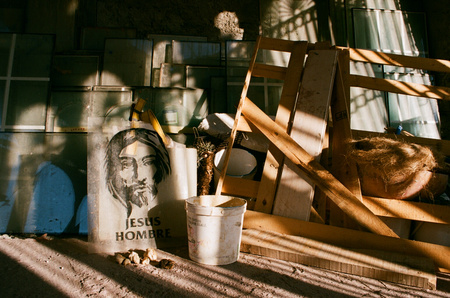
Justo Gallego sixty years ago embarked on a seemingly lunatic mission: using cast-off materials to realise his wildly ambitious design for a cathedral built on his own land outside Madrid to honour La Virgen del Pilar – Our Lady of the Pillar. The feature-length Spanish-Irish documentary Pan Seco, subtitled in English and directed by Román Cadafalch and Cadhla Kennedy, catches up with Justo at the age of ninety-three. He is a difficult man to catch up with, in constant motion, exuding élan vital, brandishing a self-deprecating wit as he takes the piss out of everyone and everything, always minding his inner compass as he follows a mystical path. In its bizarre purity, his single-minded dedication is so forceful and imaginative that viewers begin to question the validity of their own values….
Most of the heavy lifting on the job site is now done by his younger, Sancho Panza-like sidekick and heir, appropriately named Ángel. The film takes the surreal quotidian existence of the comical pair at face value, as if their peculiar activities made perfect sense. The shambolic cathedral they are building without the necessary permits reveals a compelling home-grown logic of design and a particular sort of terrible beauty. This structure-in-progress provides Cadafalch and Kennedy with abundant opportunities to make cinematic sense of its aesthetic features. Casually but deftly, with studied nonchalance, they capture the vibrant qualities of the curiously coherent building and of the individuals whose lives play out within.
“Who knew such a counterpoint to the Sagrada Familia was out there?” mused an American friend who sent her thanks for putting Pan Seco and Justo’s cathedral on her radar screen. Does that mean Pan Seco is about a man and a cathedral? Many people know of Justo’s megalomaniac edifice; we can find photographs of the building, television segments and documentary features. But this film, now seeking distribution, has been seen by a relatively small number of spectators, so its informative function is probably not its raison d’être. It is not just about a man and a building; it could be many things: a new way of seeing film or just seeing, a song of youth, even an antidote to unreason and an aesthetic response to alarming trends in public discourse.
El resto del artículo, aquí.


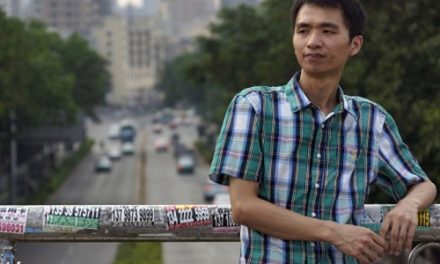
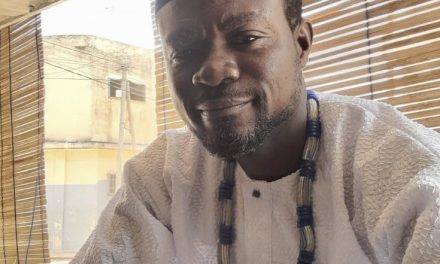

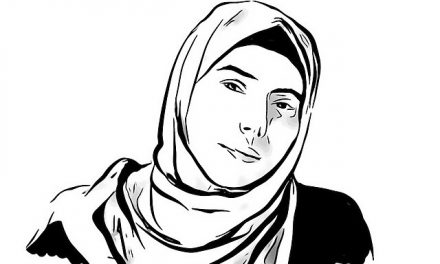
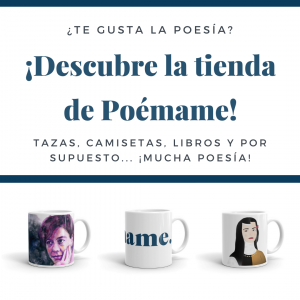
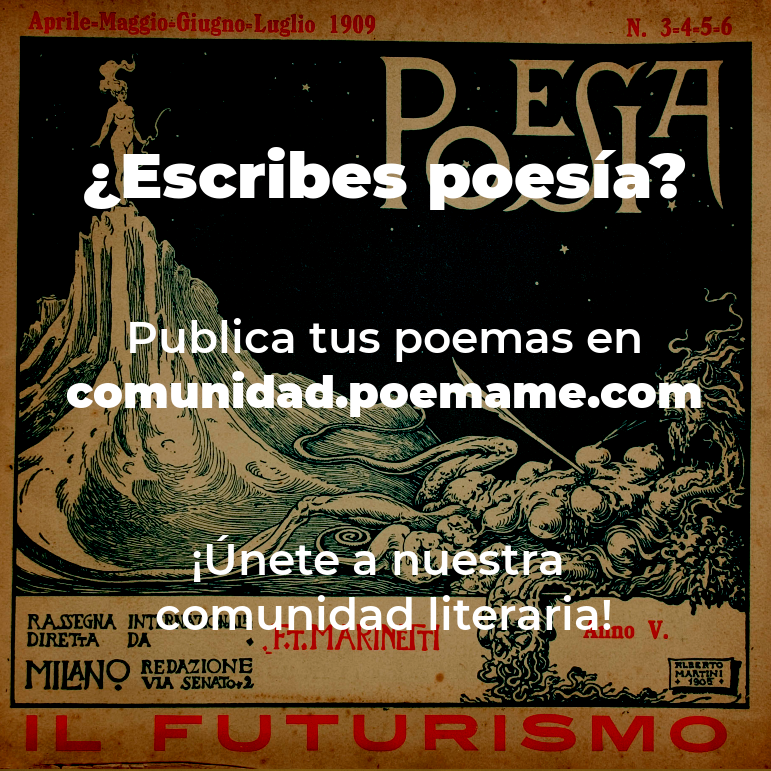
La gesta de Justo Gallego me recuerda mucho a la de Ferdinand de Cheval en Francia. Ambos comparten ese furor constructivo contra viento y marea, una voluntad férrea e insobornable por erigir un monumento. En el caso de Justo, se trata de una catedral; Ferdinand por su parte, construye con sus propias manos un mausoleo funerario desproporcionado y alucinante. En ambos casos veo paralelismos: esa búsqueda de una trascendencia a través de la arquitectura.
En mi blog Despeñaverbos redacté una entrada sobre este tema, titulada «Ferdinand de Cheval o el sueño de un loco»:
http://xn--despeaverbos-ehb.es/ferdinand-de-cheval-o-el-sueno-de-un-loco#more-603.
Gracias por compartir en este artículo sobre Justo Gallego, José Luis.
Muchas gracias. Pasaré tus comentarios a los directores del documental. Saludos